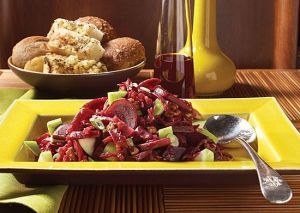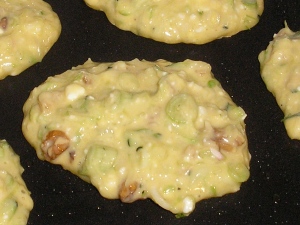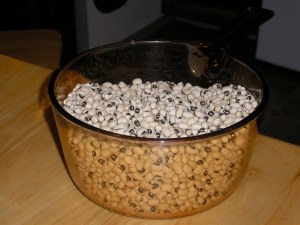
Celebrate Love your Farmer Day: Slow Food USA
Do you love your farmer? We do! And so do Food & Water Watch & the Rural Advancement Foundation International. That’s why they’ve renamed Valentine’s Day.
This year February 14th is no longer “Valentines’ Day,” but Love your Farmer Day, in support of the family farmers who raise our poultry. They need our help, so before we head out to buy teddy bears and chocolate hearts or make dinner for our loved ones, we’re calling the White House to demand that the USDA level the playing field for these farmers.
Won’t you join us?
The United States Department of Agriculture (USDA) is taking too long to implement rules that would level the playing field for small poultry farmers – it would protect them from big companies that force them to work harder for less and severely limits their options in raising and selling their livestock.
On Valentine’s Day, Monday February 14th, please take 2 minutes to call the White House and tell President Obama to level the playing field for poultry farmers.
Here’s how you do it:
Call 202-456-1111 to reach the White House Comment Line
Wait for an operator to take your message
Tell the operator that you want President Obama to ensure that the USDA implements the livestock and poultry rule. Here’s a sample of what you can say:
HI! Happy Love Your Farmer Day! I’m ________ (name) from _________ (city and state or state) calling in support of the USDA’s livestock and poultry rule. Please tell President Obama to make sure that the USDA puts this rule into practice, so that our poultry farmers have a level playing field. Thanks!
Tell us how it went by leaving a comment below.
Want some more info about the rule, which you may have heard referred to as the GIPSA rule, and what it would do for poultry farmers? Read below:
1. Allows family farmers and ranchers to find out what prices and terms of sale are being offered for livestock.
2. Increases and ensures better market access for family farm livestock producers;
3. Identifies violations and leads to improved enforcement and curtailment of the most abusive and unfair procurement practices used by corporate meatpackers.
4. Stops a common practice that allows packers to avoid competitive bidding in the marketplace, keeping open market prices artificially low.
5. Prevents meat packers from paying large volume producers higher prices simply based on the number of animals they deliver without offering the same prices to groups of producers who could collectively deliver the same number of animals.
6. Prevents packers from offering favorable price premiums to a few preferred producers without offering them to other producers who could meet the same standards.
This article is from the SLOW FOOD USA Blog publish 02/14/11
Sneak Peek:
Kale
Chard
Green Garlic
Lettuce
Beets
Turnips
Red Cabbage
Apples
Weekly Recipe:

organicauthority.com
Today’s recipe for Beet and Red Cabbage Salad doubles up on nutrient-rich vegetables: pickled beets and sweet-and-sour red cabbage. Finish the dish with crispy tart apples and crunchy toasted pecans.
Prep time is 15 minutes, cook time is 10 minutes, and all of the ingredients should be available at a well-stocked natural and organic food store.
Note: You may substitute pears for the apples or walnuts for the pecans. For added flavor and richness, sprinkle the finished salad with crumbled goat cheese or blue cheese.
Beet and Red Cabbage Salad
Makes 6 servings (about 3/4 cup each)
1 jar (16 ounces) picked beets, whole or sliced
1 jar (16 ounces) sweet-and-sour red cabbage
1/3 cup red currant jelly
1/4 teaspoon ground cloves
1/4 cup thinly sliced green onions
1 cup chopped Granny Smith apple (about 1 small apple)
1/2 cup chopped toasted pecans (see toasting instructions at end of article)
Salt and pepper, to taste
- Drain beets and cabbage, combining both liquids in a small bowl.
- Pour 1/2 cup of the combined liquids into a small saucepan; discard remainder. Add red currant jelly and cloves to saucepan; whisk to combine. Bring to a boil; reduce heat and simmer until liquid is thickened and reduced to 1/3 cup, about 10 minutes. Cool.
- Meanwhile, cut sliced beets in half (or whole beets into wedges). Toss beets, cabbage and green onions with cooled red currant dressing.
- Just before serving, stir in apple and pecans. Season to taste with salt and pepper.
To Toast Pecans: In preheated 350°F oven, bake nuts in a single layer on a rimmed baking sheet until they’re fragrant, about 5 to 8 minutes. Remove from baking sheet; cool.
Upcoming Events
Composting and Worm Bins
| February 26 |
9 am to 5 pm |
85.00 |
This class will teach the basics behind composting and worm bins. You will see everything from big tractor compost piles, to worm bins that will fit under the sink of your apartment.
Composting is the basis for growing the healthiest, most nutritious, and most disease-resistant plants. This composting method is simple and effective. it is so fun and satisfying that we must warn you composting can become addictive!
Learn how to create a worm system to recycle food waste, produce rich organic castings (compost) for the garden, cultivate fish bait, and potentially reduce your garbage bill. This course will teach you how to set up and maintain a worm bin.
You will have the chance to purchase a starter worm bin or compost bin during this class.
Class Taught by:
Elisa “Worm Girl” Robles & Whitney Bell

Whitney Bell
Whitney is an avid gardener and composter. She is inspired by the resilience and intelligence of natural systems. She received her first Permaculture Design Certificate (PDC) in 2009 at Quail Springs Learning Oasis in Cuyama, California. Here, she continued to study through the Garden Internship Program. During this time, she learned Soil Foodweb composting science with Dr. Elaine Ingam. In 2010, she followed her passion for sustainable systems design to Chiapas, Mexico, where she underwent a second PDC course. She continues to work and volunteer with various farms and gardening projects. Whitney will be traveling to Australia in October for an intensive internship in sustainable systems design at Zaytuna Farm.
BYOB
CSA Volunteer Work Day

February 26th
8:00 am – noon
Bring Your Own Bucket
We’ve got the compost but not a proper spreading machine. Help us spread the compost. Bring your gloves, water and a bucket or shovel, rake, wheelbarrow any tool you think would be helpful to spread compost.
Come get your hands dirty and help Fairview Gardens spread compost.
If you have any questions please send us an email csa@fairviewgardens.org
Happy Love your Farmer Day!
Lisa
Tags: Beets, BYOB, Carpinteria, classes, Composting, CSA Volunteer Day, goleta, Red Radish, santa barbara, Slow food USA, Urban Homesteading, Workshops, Worm Bins













